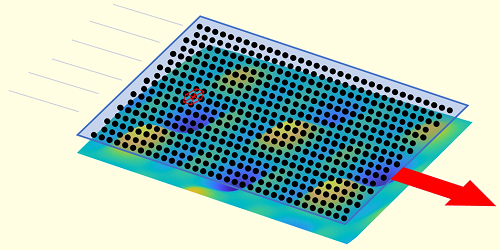Electron Crystal Reveals Its Dynamics
When subjected to a strong magnetic field, a two-dimensional system of electrons can form a crystal structure called a Wigner solid. Scientists have made disordered Wigner solids but have struggled to produce ordered ones. Now Pranav Madathil at Princeton University and his colleagues have overcome this hurdle, demonstrating that they can create and study an ordered Wigner solid using an ultra-high-quality electron system [1]. The team says that the system could be used to test and improve theoretical models of such crystals.
Madathil and colleagues tailored the layer-by-layer growth of a semiconducting film such that the film contained a precisely shaped version of a structure known as a quantum well. This structure was designed so that it hosted a two-dimensional electron system with both a low density and a high mobility—a prerequisite for making a Wigner solid. Following predictions, the team cooled this electron system to a temperature near absolute zero and then applied a powerful magnetic field to it, realizing an ordered Wigner solid.
Next, the researchers applied an electric current to their Wigner solid and measured how the current’s strength affected two of the crystal’s electrical-transport properties: its differential resistance and its electrical noise. They found that as the current’s strength increased, the Wigner solid passed through three phases, each identifiable by its differential-resistance and electrical-noise characteristics. The crystal remained stationary and was an electrical insulator in the first phase but could move freely and was an electrical conductor in the other two phases.
–Ryan Wilkinson
Ryan Wilkinson is a Corresponding Editor for Physics Magazine based in Durham, UK.
References
- P. T. Madathil et al., “Moving crystal phases of a quantum Wigner solid in an ultra-high-quality 2D electron system,” Phys. Rev. Lett. 131, 236501 (2023).




